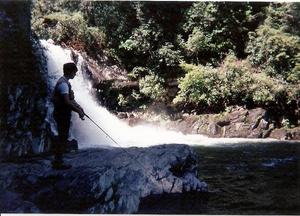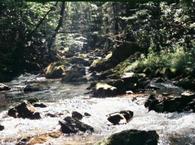
A spring creek derives its water from an underground aquifer. Typically, these springs are located in the rocky tops of the mountains where the water of s spring creek bubbles up. Sometimes the flow is small, while other times it can start as a large creek. The one thing that all spring creeks have in common is that they have a constant temperature of around 52 degrees F year around and are highly oxygenated . Also, the mineral content and nutrients are usually very favorable to produce the types of aquatic insects that make up the greater portion of the trout’s diet. Typically, spring creeks will also have an alkaline content capable of maintaining a good source of food for the aquatic insects. These conditions make an optimum condition for fly fishermen.
While the constant temperature of the water does have an affect on the insect diversity, it does however; create higher density of hatches for mayflies, midges and other insects. In spring creeks, it is best to target a specific trout whenever possible because the trout typically will hang out in smaller areas. There is not an advantage in covering a larger area as there might be in the freestone streams. On spring creeks, the trout will favor the early morning and late evening times.
A great example of a spring river is the McCloud River in Northern California. It can be noted that Nestles had a proposal to remove a 521 million gallons of water per year from the McCloud and bottling it for human consumption. Fortunately the proposal was defeated allowing the McCloud to remain a pristine spring river.
Springs can also cause spring holes within freestone streams. The trout will congregate in these spring holes because the temperature will be exiting the spring at a cool temperature while the surrounding water will be higher. When an angler finds these spring holes, the trout are great targets.
A subset of spring creeks is the limestone creeks and rivers that are famous in the state of Pennsylvania. The limestone streams emanate from underground rivers that travel through limestone deposits. The pH is even more favorable for trout and many trout records have been set in the limestone streams. These limestone streams in Pennsylvania are under threat from development as well as from cattle grazing in the nearby meadows. A typical limestone stream is Adams Creek in the Great Smoky Mountains National Park.





